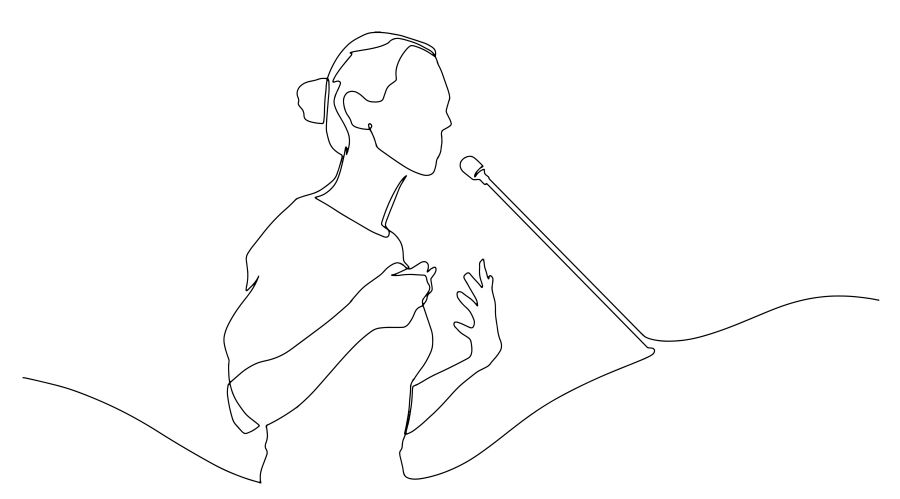Women in senior corporate positions and as SME owners are often the minority in meeting rooms, awards ceremonies, pitching events, and most business situations.
The feeling of being ‘other’ becomes more acute if you’re a woman from an underrepresented background, such as an ethnic minority, person with disabilities, or a member of the LGBTQ+ community. Often in a male-dominated and non-diverse environment, it can be hard for women to find their voice and be confident, especially if they are required to present and speak up.
Thankfully, vocal expert Anneli Harrison has provided DiversityQ with an exclusive set of tips to help women find their voices during intimidating business situations which can help them overcome their impostor syndrome, and shine and prosper in their careers. But first, she outlines what a nervous speaker looks like to understand how to shift towards embodying confidence.
What nerves look like
Harrison explains the usual reaction we feel when we’re asked to make a public speech. When we’re nervous, our voice usually gets quiet, and we tend to mumble, sound shrill, and rush the words. Physical as well as vocal changes happen too; our throats constrict and hands and knees can shake, and our body posture becomes closed and imbalanced.
Using breath to change
Harrison says that breathing properly is key to improving your voice as you deliver a speech. Breathing should be deep and happen from your diaphragm. Breath low and deeply, the more deeply you breathe, the more powerful your voice becomes.
When we’re nervous, we tend to breathe shallowly, meaning we use only a small part of our lungs. This means we’re not using our best natural voice, the one which commands attention and sounds more authoritative. So, when we speak, there is restricted volume and we’re speaking at a higher pitch due to lung restriction and tension. This can also cause vocal fatigue by trying to speak louder with not enough air, which isn’t good if speaking for a long duration or across a number of days.
Try these exercises
Engage your diaphragm by lying down and putting your knees up with your hands on your stomach. Visualise a balloon and when you breathe in it fills out, and then force the air out and watch it deflate. Breathe in slowly through your nose, and let the air in deeply towards your lower stomach. Do this for 4 seconds and feel your stomach fill up like a balloon. When you breathe out, tighten your abdominal muscles and push the air out in a controlled way as you exhale through pursed lips. Feel your stomach going down. Do this for 6 seconds Repeat this exercise 5-6 times.
Then find your centre, where you feel strong, rooted, and supported. Put your hands by your side. And breathe deeply. Then hum through your mouth, use the hum to exhale slowly until you have exhaled all your air. Repeat this five times.
After this, stand and place your hand on your abdomen. Breathe in by expanding your stomach outward, which is breathing from your diaphragm. Exhale slowly, uttering, “ha ha ha ha.” Push your abdomen in with every syllable.
Then yawn and sigh. Open your mouth as if to yawn and let your voice sigh loudly from the top of your register down to its lowest note. Then open the back of your throat making a “nnnnggg ahhh” sound.
If you’re dealing with text
Start by marking out the punctuation in the text, then read it out taking a full breath after each punctuation. As always, breathe in from the diaphragm and then use that force to read out the text. Doing this will slow down your voice, giving it more impact.
In real life, we speak quickly, and during public speaking nerves speed us up. Ensure you keep your voice steady and slow by rehearsing with vowel sounds beforehand; a,e, I,o,u, which help elongate a sentence or a phrase by emphasising words, which also helps you to slow you down. Also, inflect up at the end of sentences, instead of down. This makes the speech sound more positive and less monotonous.
Remember to use emphasis on key words or phrases in the text and open your mouth larger for vowel sounds. Think about using both your loud and quiet voice in the speech; for example, where in your text can you be quieter? When is a whisper powerful? Where do you need the most impact?
To hear more about Anneli Harrison’s services, contact her at anneliharrison@gmail.com. Harrison recently spoke at a Future Female Entrepreneur (FFE) event, to find out about the programme, click here.








